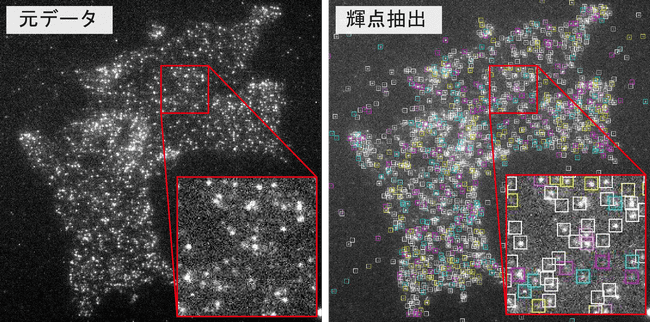In the age of big data and IoT, we can now obtain large amounts of image and video data. On the other hand, it takes a lot of time and effort to process the images. We have challenged ourselves to quickly extract useful information from large amounts of data.
About AAS
- Batch analysis of large amounts of image data, including video
- Modular design that can be used according to your needs
- New AI modules can be added and AI can be trained.
With this software, you can automatically analyze a large number of images. A large number of modules can be freely combined to achieve analysis that meets the customer’s needs, and an AI-based automatic recognition module makes it possible to automate tasks that were previously difficult even for humans.
Features
1. Bulk analysis of large amounts of data
By freely combining the filtering function with a large number of modules, we can achieve analysis that meets the needs of our customers. For example, processing A can be applied to data that meets certain conditions, while processing B can be applied to other data. You can also freely use external executable files to perform processing in between.
2. Automatic recognition by AI
By using AI, it is possible to automate tasks that were previously difficult even for humans. For example, object recognition in images, such as labeling, is one of AI’s strong points. By learning the object to be recognized in advance, it is possible to recognize and detect the same object in a newly acquired image. We can train a new AI for you. We can also build AI with more complex inputs and outputs on request.
Applications
1. Recognition of cells and their contours in microscopic images
It extracts only cell regions from the microscope image and labels individual cells. The labeled information can be used for the next analysis. By combining processing such as smoothing and noise reduction, data under various measurement conditions can be processed at once.
2. Recognizing and tracking moving objects in a video
A large number of bright spots can be labeled one by one, and their temporal changes can be tracked. With the statistical analysis module, you can analyze the obtained data at the same time. If you need additional analysis, we can add it upon request.
3. An example of analyzing a large amount of data - Analysis of heterogeneity in cell populations
With this software, we are analyzing a large amount of data obtained from the automated microscope. With the introduction of this software, we are now able to automatically analyze data of over 2,000 positions and output the results of statistical analysis, whereas manual processing is limited to about 10 data per day.
This analysis statistically showed the heterogeneity shown by a large number of cells even though they were processed in exactly the same way. We have statistically shown under what conditions the variability of results, so-called cell individuality, spreads.
Yasui et al, “Automated single-molecule imaging in living cells” Nat Commun 2018; 9: 3061.
Operating environment
- PC with Windows 7 or later Windows OS connected to the network.
- Nvidia (Not necessary. GPU just speed up the processing by AI.)

